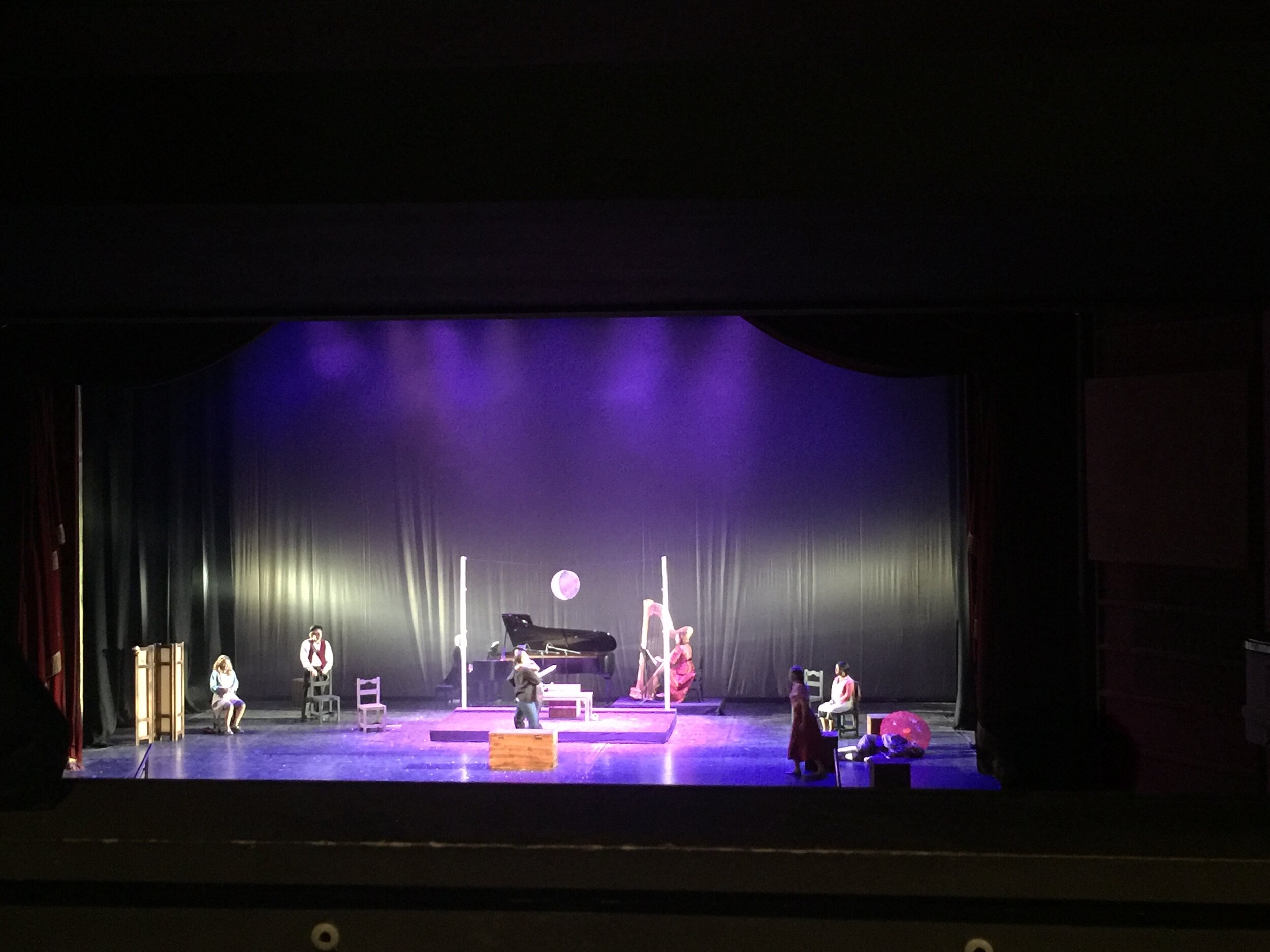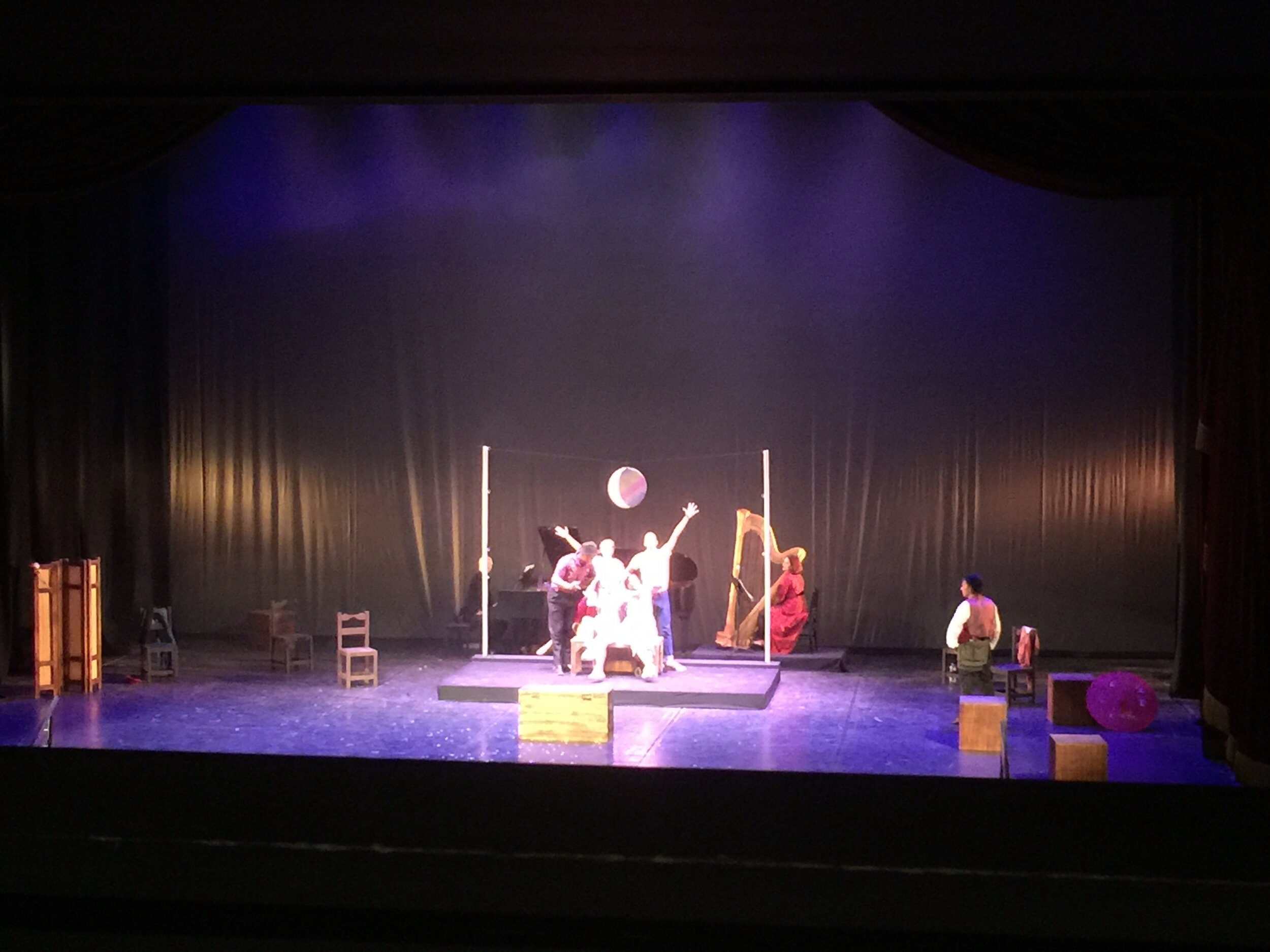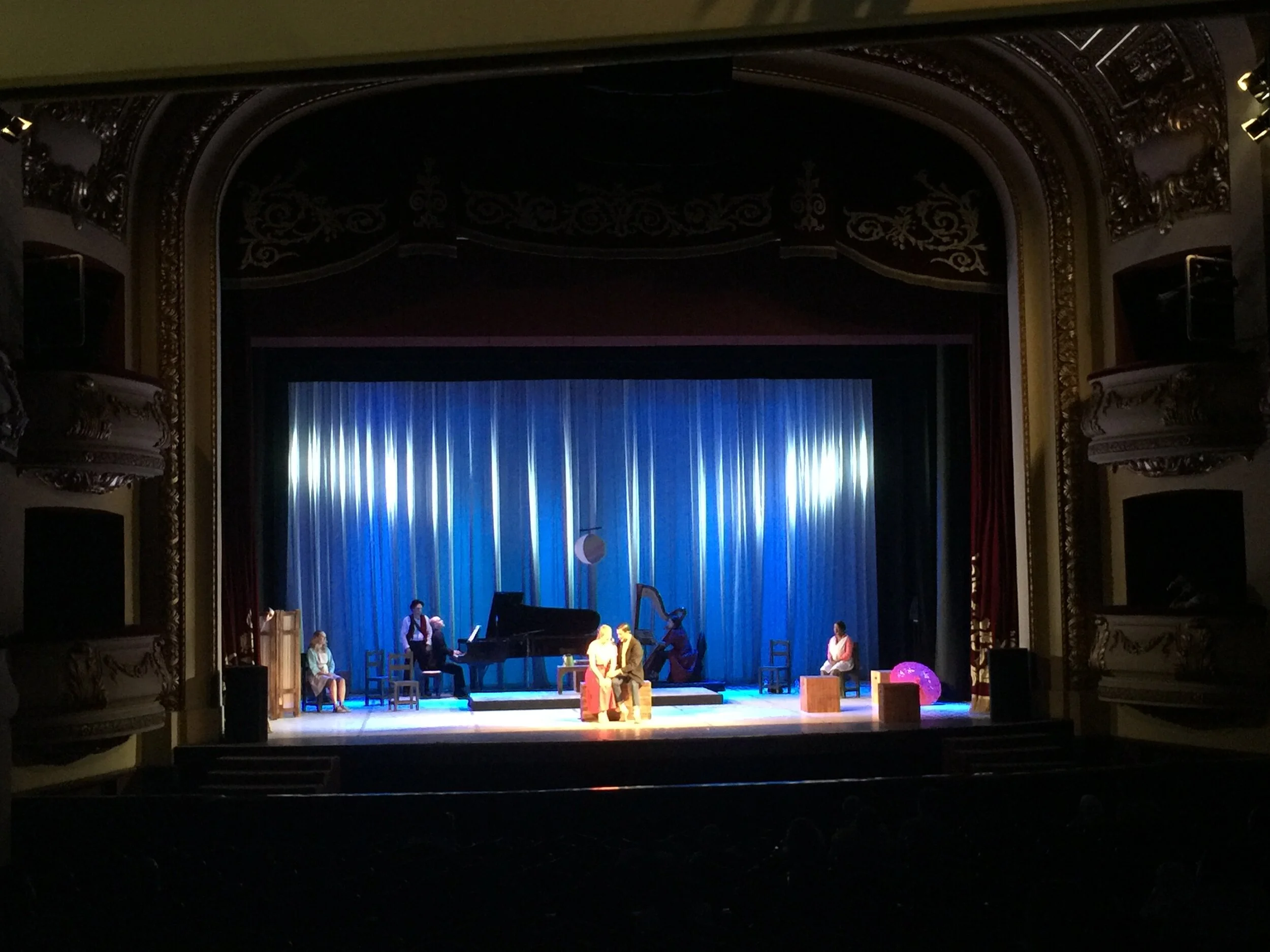Project 14- The Fantasticks
In late August of 2019 I was contacted by the head of the Cairo International Festival for Contemporary and Experimental Theatre (CIFCET). That festival, in cooperation with the US Embassy in Cairo and the Cairo Opera House was hosting an American theater ensemble from Portland, Oregon and their production of The Fantasticks, by Harvey Schmidt and Tom Jones. This production, directed by Jonathan Walters, is the classic story but with a slight twist in the casting. The ensemble would be bringing one or two essential scenery pieces and I would help coordinate the rest of their production needs. The musical was scheduled to be performed in both Cairo and at the Alexandria Opera House three days later.
We all met for the first time at the Cairo Opera the day before the opening ceremony where it was part of several other performances. Because of the shared needs of the theater, the needs of the Fantasticks had to work in conjunction with the other performances. Weeks previous, the Opera production coordinator had been emailed a list of lighting specials and scenery requirements. This list is the list that comes with the script and is based on the 1950’s production and had little to do with the current production. This could have been a costly mistake by the American ensemble. But because of my work at the Opera House the year before, the respect that I had earned with the lighting director and my continued professional reputation, the staff was willing to work with what I felt was needed, as long as it was within the overall parameters of the ceremony. That was not a problem and it was a pleasure to be working with such a talented staff again. Given the extensive light plot of both conventional and moving lights that was already installed, we were in great shape. They also had nearly any kind of soft goods, platforms and furniture that could be imagined. We quickly assembled all the scenery and props that were needed. As a backdrop we decided on a white scrim hung with fullness to create a light value background that we could color with light. I was even permitted to program and run the lighting controllers for the performance on my own, which is almost unheard of in theaters of that kind. I attribute it to my reputation as trusted collaborator that allowed these concessions and cooperation to happen. In one of the best moments of my time here in Egypt, I was being shown the simple 1950’s requirements that had been sent to the Opera House by one of the assistant production managers, who was a little upset that our needs were different. One of the foremost theatrical directors in Egypt that I had worked with on Amin n Partners was directing the overall ceremony, along with several plays for CIFCET, was standing close to us. He told the irate production manager to be quiet and to “Be nice to John. He is my big friend.” Not to be outdone, the lighting director, who is a legend in Egypt and surrounding countries, chimed in with “Hey…John is my big friend, too!” For the rest of my time there I was given whatever I needed. This respect has nothing to do with my ability as a designer. I honestly have no idea if I’m good or not. At moments like that, talent is inconsequential. Their comments were based on the fact that I always try and treat my colleagues in the theater, no matter what their position, with professionalism and respect. My father, who was a drill instructor in the United States Marines and trained young men to fight and maybe die, told me once that to work with people you have to imagine that they’re like a piece of rope. If you push too much it bunches up and doesn’t move. To make them go where they need to go, you have to pull the rope. You must lead it in the right direction and it will fall into place.
Below are images from the production in Cairo and from the Alexandria Opera House.


